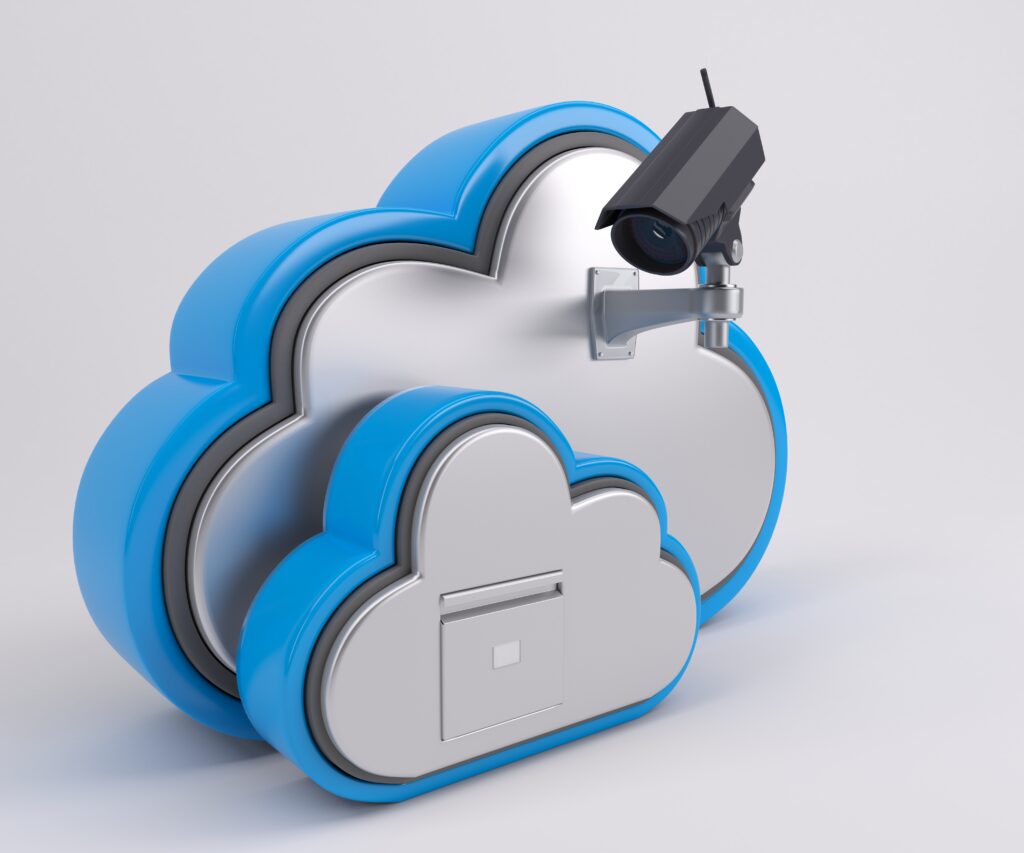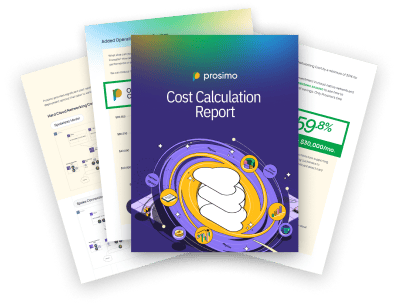Multi-cloud adoption is rapidly growing, driven by the benefits of flexibility, scalability, and cost-effectiveness it offers. However, concerns around security loom large, posing a major hurdle in widespread adoption. This article delves deep into the world of multi-cloud security, exploring its inherent advantages, potential vulnerabilities, and best practices for achieving a robust security posture. We’ll uncover the truth: Is multi-cloud truly secure?

Unveiling the Benefits of Multi-Cloud Security
While concerns about security often dominate the multi-cloud conversation, there are undeniable advantages to embracing this approach when implemented with a well-defined strategy and robust security practices.
1. Enhanced Resilience: Building a Fortress Against Disruptions
Imagine your organization relying solely on one cloud provider. A major outage or security breach could cripple your entire IT infrastructure. Multi-cloud offers a powerful shield against such vulnerabilities:
- Redundancy and Failover: Distributing your applications and data across multiple clouds provides instant redundancy. If one cloud experiences an issue, your systems can seamlessly failover to another, minimizing downtime and impact on operations.
- Disaster Recovery Simplified: Multi-cloud simplifies disaster recovery by offering geographically dispersed data centers. In case of a regional outage, your data and applications remain accessible in other regions, ensuring business continuity.
- Reduced Vendor Lock-in: Vendor lock-in occurs when you become dependent on a single provider, limiting your options and potentially inflating costs. Multi-cloud frees you from this dependence, allowing you to switch providers or services based on changing needs or security concerns.
Real-world example: A healthcare organization faced a ransomware attack on its primary cloud provider. Having a secondary cloud environment enabled them to quickly migrate critical data and applications, minimizing downtime and patient impact.
2. Improved Agility: Embracing the Power of Choice
The cloud landscape is constantly evolving, with new providers and innovative services emerging. Multi-cloud allows you to leverage this dynamic environment by:
- Best-of-breed solutions: No single cloud provider excels in every area. Multi-cloud enables you to choose the best provider for specific needs, whether it’s cost-effective storage, high-performance computing, or cutting-edge AI capabilities.
- Faster Innovation: Experimenting with new services and technologies becomes easier in a multi-cloud environment. You can test and deploy solutions quickly without being restricted by a single provider’s limitations.
- Meeting unique requirements: Different departments or projects within your organization may have specific needs. Multi-cloud allows you to tailor your cloud environment to meet these diverse requirements efficiently.
Case study: A financial services company adopted a multi-cloud approach to leverage different providers for its core banking system, data analytics, and customer-facing applications. This enabled them to achieve faster development cycles and deliver innovative financial services to their customers more quickly.
3. Cost Optimization: Finding the Sweet Spot
Cloud costs can add up quickly, but multi-cloud offers opportunities for significant savings:
- Competitive Pricing: By leveraging multiple providers, you can compare pricing models and choose the most cost-effective options for your specific needs. Negotiating with multiple providers can also lead to better pricing deals.
- Resource Optimization: Multi-cloud allows you to utilize the right service for the right task. You can leverage cost-effective storage options for inactive data while using high-performance computing instances for demanding workloads, optimizing your spending across different cloud services.
- Cloud Bursting: During periods of peak demand, you can leverage additional resources from another cloud provider instead of scaling up your primary cloud, saving costs on underutilized resources.
Example: A media company used a multi-cloud approach to dynamically scale its video streaming platform during peak usage periods. By leveraging a secondary cloud provider for temporary resources, they avoided costly overprovisioning in their primary cloud and achieved significant cost savings.

Demystifying Multi-Cloud Security
1. Shared Responsibility Model: Understanding the “Shared, But Not Equal” Paradigm
The shared responsibility model is the cornerstone of cloud security, outlining the division of security obligations between cloud providers and their customers. Here’s a breakdown of the key aspects:
- Cloud Provider Responsibility: This covers securing the underlying infrastructure, including physical security, network security, and virtualization layer protection. Providers also handle incident response and vulnerability management for their infrastructure.
- Customer Responsibility: Organizations are responsible for securing their data, applications, and access within the cloud environment. This includes tasks like:
- Identity and Access Management (IAM): Controlling user access and permissions within the cloud environment.
- Data Encryption: Protecting sensitive data at rest, in transit, and in use.
- Security Configuration Management: Ensuring secure configurations for cloud resources like storage, databases, and compute instances.
- Security Monitoring and Incident Response: Actively monitoring for threats, investigating security incidents, and taking appropriate remediation actions.
- Identity and Access Management (IAM): Controlling user access and permissions within the cloud environment.
Important Caveats
- Shared responsibility boundaries can vary: Different cloud providers have slightly different interpretations of the shared responsibility model, so carefully review their service agreements and documentation.
- Customer responsibility is complex: Don’t underestimate the complexity of securing your environment, even with a shared model. Organizations need dedicated security expertise and tools to effectively manage their responsibilities.
2. Attack Surface Expansion: Navigating the Multi-Cloud Labyrinth
Shifting from a single cloud to multiple increases your attack surface, the total number of potential entry points for attackers. This complexity introduces new challenges:
- Increased Management Overhead: Managing security across diverse cloud environments requires robust tools and processes, often exceeding the capabilities of traditional security teams.
- Visibility Gaps: Gaining a comprehensive view of security posture across multiple clouds can be challenging, creating blind spots for potential vulnerabilities.
- Lateral Movement Threats: Attackers compromising one cloud environment can leverage interconnectedness to move laterally to other environments, potentially compromising your entire IT ecosystem.
Mitigation Strategies
- Centralized Security Management: Utilize tools that provide a consolidated view of security across all clouds, enabling centralized policy management and threat detection.
- Micro-segmentation: Implement network segmentation within and across cloud environments to limit the potential impact of breaches and lateral movement.
- Cloud Security Posture Management (CSPM): Leverage CSPM solutions to continuously assess cloud configurations and identify potential security weaknesses across all clouds.
3. Compliance Challenges: A Regulatory Maze
Multi-cloud environments introduce complexities in adhering to regulations and data privacy requirements. Consider these key challenges:
- Divergent Compliance Requirements: Different cloud providers may operate in regions with varying compliance requirements, forcing organizations to adapt their security practices accordingly.
- Data Residency and Transfer: Understanding and managing data residency and transfer regulations across different cloud environments can be intricate.
- Auditing and Reporting: Demonstrating compliance across multiple cloud environments requires robust auditing and reporting capabilities.
Best Practices
- Conduct thorough compliance assessments: Identify relevant regulations and understand how they apply to your multi-cloud architecture.
- Seek legal and compliance expertise: Partner with specialists to navigate the complexities of multi-cloud compliance.
- Utilize compliance tools and services: Leverage cloud-based compliance solutions to automate tasks and streamline reporting.

Addressing the Vulnerabilities: Securing Your Multi-Cloud Fortress
While multi-cloud unlocks valuable benefits, it presents unique security challenges. Here, we delve into key strategies to fortify your multi-cloud environment:
1. Identity and Access Management (IAM): The Gatekeepers of Your Cloud Kingdom
Imagine multiple castles with independent guards. A multi-cloud environment resembles this, requiring robust IAM to control access:
- Centralized Identity Management: Implement a single identity management solution that integrates with all your cloud providers. This ensures consistent access policies and simplifies user management across different environments.
- Granular Access Control: Define granular access control policies that specify who can access what, where, and how within each cloud environment. Implement role-based access control (RBAC) to assign permissions based on job function and minimize the risk of privilege misuse.
- Multi-Factor Authentication (MFA): Enforce MFA for all user access across all cloud environments. MFA adds an extra layer of security, requiring users to provide a second verification factor beyond their password, significantly reducing the risk of unauthorized access.
Advanced IAM Strategies
- Just-in-Time (JIT) Provisioning: Grant access only when needed and revoke it automatically when no longer required, minimizing the attack window for compromised credentials.
- Single Sign-On (SSO): Offer a seamless user experience with SSO, allowing users to access all cloud resources with a single login, reducing the risk of password fatigue and shadow IT.
- Identity Governance: Implement robust identity governance processes to regularly review and audit user access privileges, ensuring they remain aligned with current needs and preventing unauthorized access.
2. Data Encryption: Shielding Your Digital Jewels
Data breaches are a constant threat. Encryption is your shield, protecting sensitive information at rest, in transit, and in use:
- Data Encryption at Rest: Encrypt all sensitive data stored in cloud databases, object storage, and other cloud resources. This ensures data remains unreadable even if attackers gain access to your cloud environment.
- Data Encryption in Transit: Encrypt all data transferred between your on-premises environment and cloud resources, as well as between different cloud environments. This protects data from interception during transmission.
- Data Encryption in Use: Consider encrypting data even while it’s being processed in memory or on compute instances. This adds an extra layer of protection against insider threats or memory scraping attacks.
Encryption Key Management
- Centralized Key Management: Implement a centralized key management system (KMS) to securely store and manage encryption keys across all cloud environments. Ensure strict access controls and robust key rotation practices to prevent unauthorized key access and decryption of your data.
- Transparent Encryption: Utilize transparent encryption solutions that automatically encrypt and decrypt data without requiring application modifications. This simplifies data protection while maintaining application performance.
3. Security Monitoring and Threat Detection: Sentinels on Patrol
Constant vigilance is crucial. Deploy comprehensive security monitoring and threat detection solutions to identify and respond to potential threats proactively:
- Centralized Security Information and Event Management (SIEM): Implement a centralized SIEM solution that aggregates security logs and events from all your cloud environments, providing a holistic view of your security posture and enabling efficient threat detection.
- Cloud Security Posture Management (CSPM): Leverage CSPM solutions to continuously assess the security configuration of your cloud resources across all providers, identifying potential vulnerabilities and misconfigurations that could be exploited by attackers.
- Threat Intelligence Integration: Integrate threat intelligence feeds into your security monitoring tools to stay updated on the latest threats and vulnerabilities, enabling you to proactively detect and mitigate potential attacks.
Advanced Security Monitoring Strategies
- User Behavior Analytics (UBA): Utilize UBA solutions to detect anomalous user behavior that could indicate insider threats or compromised accounts.
- Network Traffic Analysis (NTA): Analyze network traffic within and across your cloud environments to identify suspicious activity and potential malware infections.
- Security Automation: Automate routine security tasks, such as log collection, anomaly detection, and incident response, to improve efficiency and reduce human error.

Best Practices for Secure Multi-Cloud Environments: Building a Multi-Layered Defense
Securing your multi-cloud environment requires a multi-layered approach that combines robust security solutions with strategic best practices. Here, we delve into key strategies for building a secure and resilient cloud infrastructure:
1. Centralized Security Management: The Command Center of Your Cloud Security
Imagine managing multiple castles with independent security systems. A centralized security platform provides the equivalent for your multi-cloud environment:
- Unified Security Policies: Define consistent security policies across all your cloud environments through a centralized platform. This ensures uniform security standards and simplifies policy management.
- Consolidated Configuration Management: Configure security settings for all cloud resources from a single platform, reducing complexity and minimizing the risk of misconfigurations in different environments.
- Aggregated Security Alerts and Reporting: Gain a holistic view of your security posture across all clouds with centralized logging and reporting. This enables faster incident detection and response, improving overall security effectiveness.
Centralized Security Tools
- Security Information and Event Management (SIEM): Implement a SIEM solution that integrates with all your cloud providers, centralizing security logs and events for comprehensive analysis and threat detection.
- Cloud Security Posture Management (CSPM): Leverage a CSPM solution to continuously assess the security configuration of your cloud resources across all providers, identifying and remediating potential vulnerabilities.
- Extended Detection and Response (XDR): XDR solutions provide deeper visibility and correlation across all security data, enabling faster threat detection and incident response across your entire multi-cloud environment.
2. Automation and Orchestration: Eliminating the Human Error Factor
Automation is your ally in a vast multi-cloud landscape. Implement it wherever possible to:
- Automate Security Tasks: Automate routine tasks like log collection, configuration management, and security patching. This reduces human error, improves consistency, and frees up resources for more strategic activities.
- Automated Security Response: Implement automated incident response playbooks to trigger predefined actions based on specific security events. This enables faster and more consistent response to threats, minimizing their impact.
- Infrastructure Provisioning and Decommissioning: Automate infrastructure provisioning and decommissioning to ensure proper security configurations from the start and prevent orphaned resources or misconfigurations after decommissioning.
Automation Tools
- Infrastructure as Code (IaC) tools: Utilize IaC tools to define and automate the provisioning and configuration of your cloud infrastructure, ensuring consistency and security across deployments.
- Security Automation and Orchestration (SAO) Platforms: Leverage SAO platforms to automate security workflows, including threat detection, incident response, and vulnerability management.
- Cloud-Native Security Tools: Many cloud providers offer built-in automation capabilities for security tasks. Take advantage of these tools to streamline your security operations within each cloud environment.
3. Continuous Security Testing: Proactive Vulnerability Hunting
Don’t wait for attackers to find your weaknesses. Continuously test your multi-cloud environment to identify and address vulnerabilities proactively:
- Regular Vulnerability Assessments: Conduct regular vulnerability assessments across all your cloud resources using automated scanners and manual penetration testing. This helps identify potential security gaps before they can be exploited by attackers.
- Penetration Testing: Engage external penetration testers to simulate real-world attacks and identify potential weaknesses in your security posture. This provides valuable insights into your overall security effectiveness.
- Security Misconfiguration Testing: Use specialized tools to identify and remediate misconfigurations in your cloud environments that could create vulnerabilities.
Continuous Testing Strategies
- Shift-Left Security: Integrate security testing into the development and deployment lifecycle, identifying and fixing vulnerabilities early in the process.
- Chaos Engineering: Introduce controlled chaos into your environment to test its resilience and ability to withstand unexpected events.
- Threat Modeling: Regularly model potential threats to your multi-cloud environment and adjust your security controls accordingly.

Navigating the Multi-Cloud Maze: Real-World Examples and Practical Guidance
The theoretical frameworks discussed previously are valuable, but understanding how leading organizations translate them into action is crucial. This section dives into real-world case studies and practical guidance to help you navigate your own multi-cloud security journey.
Case Studies
1. Financial Services Giant Embraces Multi-Cloud Security
- Challenge: A global financial services company wanted to leverage the agility and cost benefits of multi-cloud while ensuring robust security for sensitive customer data.
- Solution: They implemented a centralized security platform for unified policy management across their cloud environments (AWS, Azure, GCP). They also adopted automation for security tasks and continuous security testing to identify and address vulnerabilities proactively.
- Success: The company achieved significant cost savings by optimizing cloud resources across providers and improved agility by quickly deploying new services. Additionally, their centralized security approach strengthened their compliance posture and minimized security risks.
2. Retail Leader Enhances Security with Multi-Cloud
- Challenge: A major retail chain faced security concerns about managing customer data across multiple cloud environments for online shopping and loyalty programs.
- Solution: They implemented a multi-layered security approach, including data encryption at rest and in transit, identity and access management (IAM) with MFA, and cloud security posture management (CSPM) for continuous vulnerability assessment.
- Success: The retail chain significantly improved data protection and minimized the risk of unauthorized access. They also achieved compliance with stringent data privacy regulations and built trust with their customers regarding data security.
3. Healthcare Provider Optimizes Security in the Cloud
- Challenge: A healthcare organization faced challenges securing its electronic health records (EHRs) and patient data across a hybrid cloud environment (on-premises and public cloud).
- Solution: They implemented a cloud security platform for visibility and control across their hybrid environment. They also adopted encryption for sensitive data, access controls for authorized personnel, and threat detection solutions for proactive incident response.
- Success: The healthcare provider ensured secure access to patient data while improving data privacy compliance. They also achieved increased operational efficiency by leveraging cloud scalability for EHR management.
Practical Guidance for Your Multi-Cloud Journey
Starting with Multi-Cloud
- Define your multi-cloud strategy: Clearly outline your business goals and security requirements before migrating to multiple clouds.
- Assess your security posture: Conduct a thorough security assessment of your on-premises environment before migrating to the cloud.
- Choose the right cloud providers: Evaluate potential providers based on their security offerings, compliance certifications, and industry expertise.
Enhancing Existing Security
- Centralize security management: Implement centralized platforms for policy management, configuration, and security information across all clouds.
- Adopt automation and orchestration: Automate routine security tasks to reduce human error and improve consistency.
- Conduct continuous security testing: Regularly assess your cloud environments for vulnerabilities and misconfigurations.
- Invest in security awareness training: Educate your employees on cybersecurity best practices to minimize the risk of human error.
Conclusion
The cloud has become the new battleground for businesses seeking agility, scalability, and cost-effectiveness. Multi-cloud, the strategic use of multiple cloud providers, offers even greater advantages, but concerns about security linger. This exploration has delved into the complexities of multi-cloud security, uncovering its potential pitfalls and undeniable benefits. So, is multi-cloud truly secure?
The Verdict: Security is a Journey, Not a Destination
Multi-cloud security is not a binary yes or no answer. It’s a continuous journey that demands a proactive and well-defined approach. While inherent challenges like increased attack surfaces and compliance complexities exist, the potential for a secure multi-cloud environment is undeniable.
Embracing the Benefits, Mitigating the Risks
The benefits of multi-cloud are alluring: enhanced resilience against outages or breaches, improved agility to innovate faster, and optimized costs through competitive pricing across providers. By acknowledging these advantages and implementing robust security strategies, organizations can unlock the full potential of multi-cloud.
The Pillars of Secure Multi-Cloud
The journey to a secure multi-cloud requires a multi-layered approach. Robust Identity and Access Management (IAM) ensures granular control, while data encryption safeguards sensitive information. Proactive security monitoring and threat detection identify potential breaches before they occur.
Best Practices and Beyond:
Centralized security management and automation streamline operations and minimize human error. Continuous security testing uncovers vulnerabilities before attackers exploit them. Learning from real-world case studies and adopting best practices provides valuable insights for your multi-cloud journey.
The Evolving Landscape and Emerging Trends:
The future of multi-cloud security is dynamic. Security as Code (SecOps) automates configurations for efficiency. Zero Trust Network Access grants least privilege access regardless of location. Cloud-native security solutions leverage the unique characteristics of the cloud environment. Artificial intelligence and machine learning play an increasingly crucial role in threat detection and response.
A Final Thought: Embrace Security, Embrace the Future
Multi-cloud offers a path to greater agility and innovation, but security must be a core consideration. By understanding the challenges, implementing best practices, and embracing emerging technologies, organizations can navigate the multi-cloud landscape with confidence, unlocking its full potential while ensuring a secure and resilient future.
Remember, security is an ongoing journey, not a destination. Partnering with a professional service provider specializing in multi-cloud network and security services can offer invaluable expertise and support. Their comprehensive understanding of the multi-cloud landscape and security best practices can help you navigate complexities, implement robust solutions, and confidently embrace the future of multi-cloud, where agility, innovation, and security go hand-in-hand.
